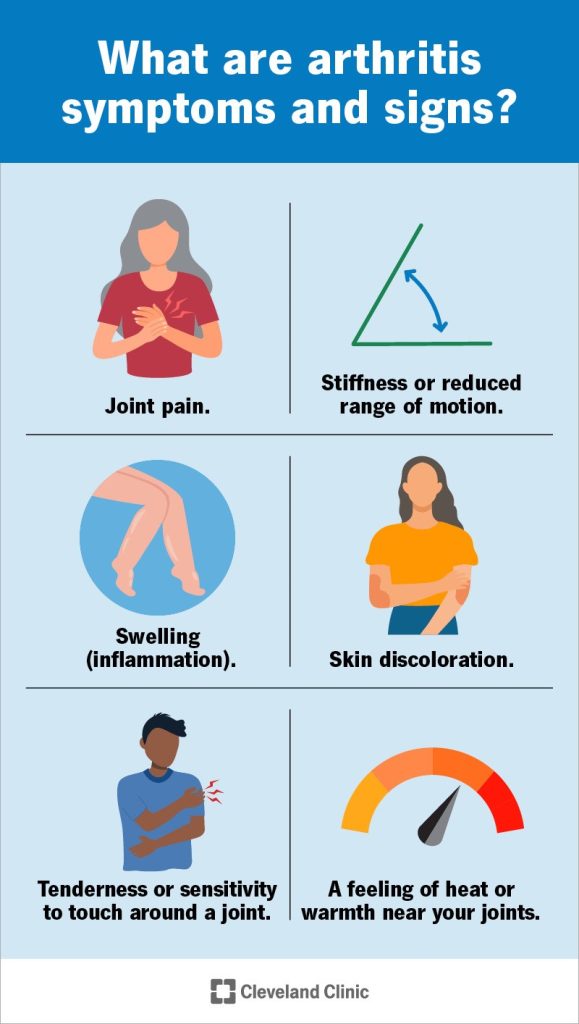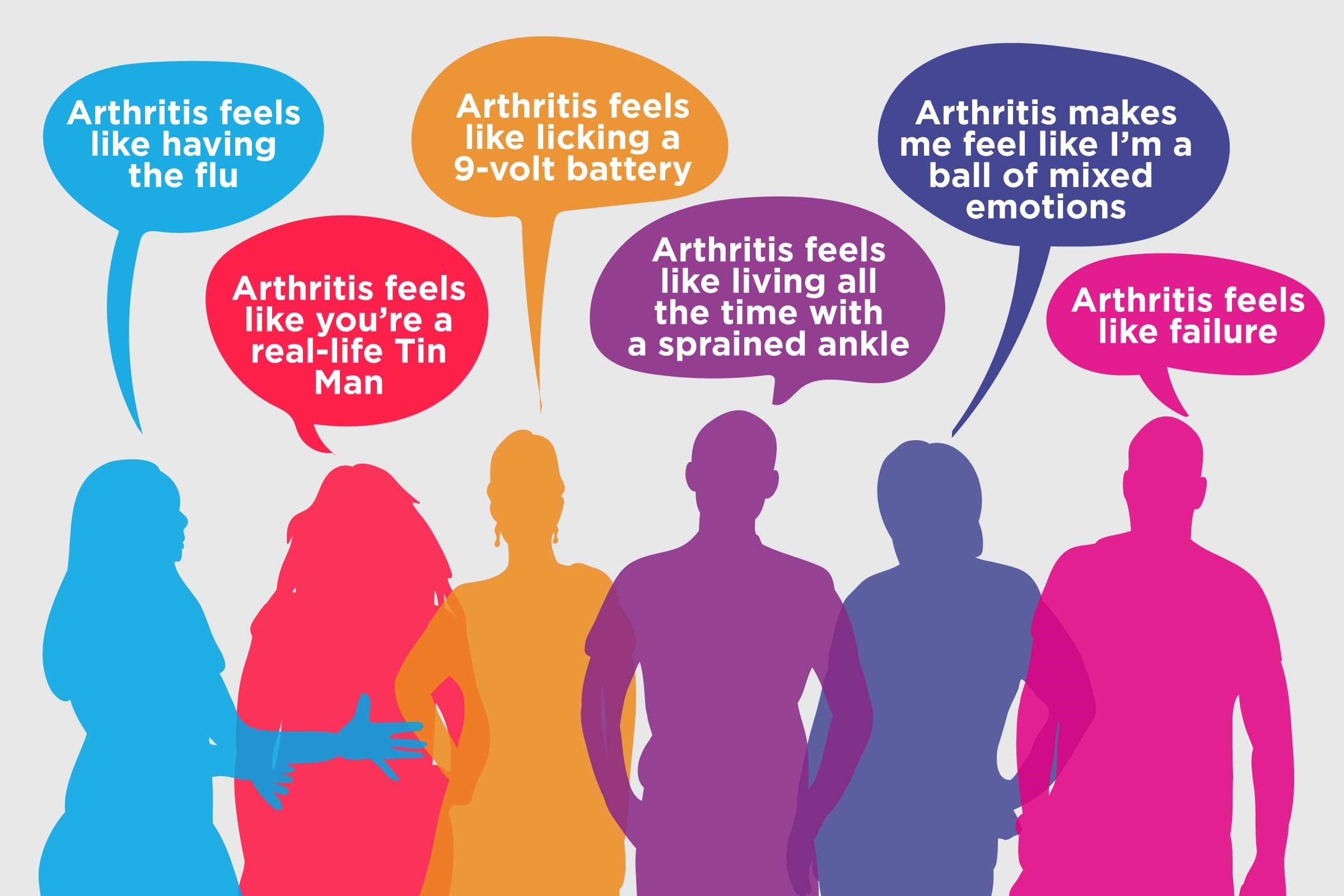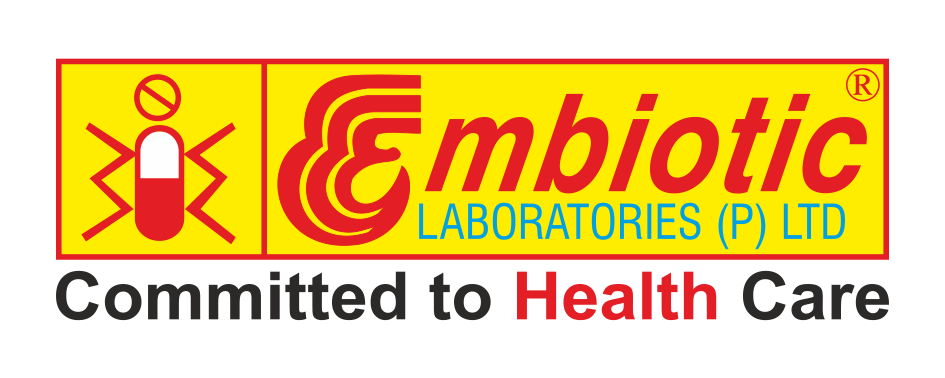February 2, 2025
A Deep Dive into Arthritis: Understanding the Silent Epidemic
Types of Arthritis

There are more than 100 different types of arthritis. Some of the most common types include:
Osteoarthritis (OA): The most common type, OA is a “wear-and-tear” disease affecting cartilage, the smooth tissue cushioning the ends of bones in joints.
- Affects: Primarily weight-bearing joints like hips, knees, and spine.
- Symptoms: Pain, stiffness, swelling, reduced range of motion, and joint tenderness.
- Risk Factors: Age, obesity, joint injury, repetitive stress, genetics.
Rheumatoid Arthritis (RA): an autoimmune disorder where body’s immune system mistakenly attacks its own tissues, leading to inflammation in the joints.
- Affects: Typically affects smaller joints like hands, wrists, and feet, but can also involve other organs.
- Symptoms: Pain, swelling, stiffness, fatigue, fever, and weight loss.
- Risk Factors: Genetics, smoking, environmental factors.
- Psoriatic Arthritis (PsA): An inflammatory arthritis associated with psoriasis, a skin condition.
Psoriatic Arthritis (PsA): An inflammatory arthritis associated with psoriasis, a skin condition.
- Affects: Joints, skin, and sometimes other organs.
- Symptoms: Joint pain, swelling, stiffness, skin lesions, nail changes, fatigue.
- Risk Factors: Family history of psoriasis or PsA.
Gout: a type caused by high levels of uric acid in the blood, leading to the formation of sharp crystals in the joints.
- Affects: Commonly affects the big toe.
- Symptoms: Sudden, severe joint pain, redness, swelling, and warmth.
- Risk Factors: Diet high in purines, alcohol consumption, and certain medical conditions.
Juvenile Idiopathic Arthritis (JIA): it is group of chronic arthritis conditions that begin before the age of 16.
- Symptoms: Joint pain, swelling, stiffness, fever, rash, and eye inflammation.
Understanding the Underlying Mechanisms
Arthritis arises from a complex interplay of factors, including:

- Cartilage Degradation: In conditions like OA, the protective cartilage in joints breaks down, leading to bone-on-bone friction.
- Joint Inflammation: The hallmark of arthritis is inflammation, leading to swelling, pain, and stiffness.
- Genetics: A family history of certain types of arthritis increases the risk.
- Injury: Joint trauma can accelerate cartilage breakdown and increase the risk of OA.
- Metabolic Disorders: Gout is linked to high levels of uric acid in the blood.

Recognizing the Symptoms
The symptoms of arthritis can vary significantly depending on the type and severity of the condition. Common signs and symptoms include:
- Joint Pain: Aching, throbbing, or burning pain in one or multiple joints.
- Stiffness: Difficulty moving joints, especially in the morning.
- Swelling: Inflammation and fluid accumulation around the joints.
- Tenderness: Pain upon touching the affected joints.
- Reduced Range of Motion: Difficulty moving joints through their full range of motion.
- Fatigue: General tiredness and weakness.
Diagnosis of Arthritis
- Physical Examination: Assessment of joint tenderness, swelling, and range of motion.
- Medical History: Detailed review of symptoms, family history, and lifestyle factors.
- Laboratory Tests: Blood tests to check for inflammation, autoantibodies (in RA), and uric acid levels (in gout).
- Imaging Studies: X-rays, MRI, and ultrasound to assess joint damage.
Treatment of Arthritis
Managing arthritis typically involves a multidisciplinary approach:
- Medications:
- Pain relievers: Over-the-counter medications like acetaminophen and ibuprofen.
- Nonsteroidal anti-inflammatory drugs (NSAIDs): Reduce pain and inflammation.
- Disease-modifying antirheumatic drugs (DMARDs): Slow the progression of RA and other autoimmune arthritis.
- Biologics: Targeted therapies that suppress the immune system.
- Corticosteroids: Powerful anti-inflammatory medications.
- Lifestyle Modifications:
- Weight management: Maintaining a healthy weight can reduce stress on weight-bearing joints.
- Exercise: Regular physical activity, such as low-impact exercises like swimming or cycling, can improve joint flexibility and strength.
- Dietary changes: A balanced diet rich in fruits, vegetables, and whole grains can support overall health.
- Ergonomics: Using proper body mechanics and modifying workspaces can reduce stress on joints.
- Protecting joints: Using proper body mechanics, avoiding repetitive stress, and wearing protective gear during sports.
- Quitting smoking: Smoking increases the risk of RA and other inflammatory conditions.
- Therapies:
- Physical therapy: Exercises to improve strength, flexibility, and range of motion.
- Occupational therapy: Techniques to adapt daily activities and improve function.
- Hydrotherapy: Exercises performed in warm water to reduce pain and stiffness.


Living with Arthritis
Living with arthritis can present challenges, but with proper management, individuals can maintain a good quality of life.
- Self-management strategies:
- Pain management techniques: Relaxation techniques, mindfulness, and deep breathing exercises.
- Fatigue management: Pacing activities, prioritizing tasks, and getting adequate rest.
- Emotional support: Joining support groups or connecting with others living with arthritis.
- Assistive devices: Using aids like canes, walkers, or splints to assist with daily activities.
- Coping strategies:

- Developing a positive outlook: Maintaining a positive attitude and focusing on what you can do.
- Setting realistic goals: Breaking down large tasks into smaller, manageable steps.
- Communicating with loved ones: Sharing your experiences and seeking emotional support.
Conclusion
Arthritis is a complex and multifaceted condition that can significantly impact an individual’s quality of life. However, with early diagnosis, appropriate treatment, and effective self-management strategies, individuals can effectively manage their symptoms and maintain a fulfilling life.
Disclaimer: The information presented is accurate and evidence-based, drawing from reputable sources and adhering to ethical guidelines. This information is for general knowledge and informational purposes only and does not constitute medical advice.

